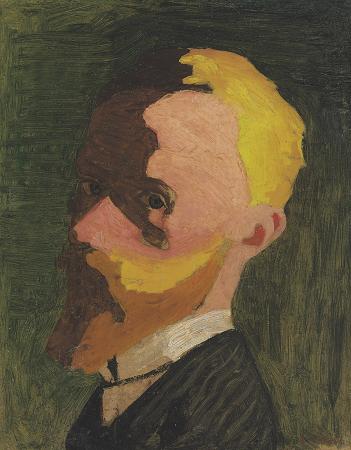Nabis Artist. Les Nabis was a group of young French artists active in Paris from 1888 until 1900, who played a large part in the transition from impressionism and academic art to abstract art, symbolism and the other early movements of modernism. The members included Pierre Bonnard, Maurice Denis, Paul Ranson, Édouard Vuillard, Ker-Xavier Roussel, Félix Vallotton, and Paul Sérusier. Most were students at the Académie Julian in Paris in the late 1880s. The artists shared a common admiration for Paul Gauguin and Paul Cézanne and a determination to renew the art of painting, but varied greatly in their individual styles. They believed that a work of art was not a depiction of nature, but a synthesis of metaphors and symbols created by the artist.In 1900, the artists held their final exhibit, and went their separate ways. The Nabis took their name from the Arabic word nabi, or prophet, and the similar word in Hebrew, nebiim, The term was coined in 1888 by the linguist Auguste Cazalis, who drew a parallel between the way these painters aimed to revitalize painting and the way the ancient prophets had rejuvenated Israel. The Nabis were a group of young artists of the Académie Julian in Paris, who wanted to transform the foundations of art. In October 1888 one of the artists, Paul Sérusier, had traveled to Pont-Aven, where, under the guidance of Paul Gauguin, he made a small painting of the port on wood, composed of patches of vivid color assembled to give the feeling of the port. The students called this first Nabis painting The Talisman, and it eventually became an icon of 20th-century art. In 1889, the same year of the Paris International Exposition and the opening of the Eiffel Tower, the group held its first modest exposition at the Café des Arts, which was located without the grounds of the Exposition. It was titled The Impressionist and Synthesist Group, and included works by two well-known artists, Paul Gauguin and Émile Bernard. In August 1890, Maurice Denis, then eighteen years old, gave the group a more concrete philosophy. Writing under the name Pierre Louis, he wrote an article in the journal Art et Critique entitled The Definition of Neo-traditionalism, which became the manifesto of the movement. The celebrated opening line of the essay was: Remember that a picture, before being a battle horse, a female nude or some sort of anecdote, is essentially a flat surface covered with colors assembled in a certain order. This idea was not original to Denis; the idea had been forward not long before by Hippolyte Taine in The Philosophy of Art, where Taine wrote: A painting is a colored surface, in which the various tones and various degrees of light are placed with a certain choice; that is its intimate being. However, it was the expression of Denis which seized the attention of artists. As Denis explained, he did not mean that form of the painting was more important than the subject. He wrote, The profoundness of our emotions comes from the sufficiency of these lines and these colors to explain themselves.everything is contained in the beauty of the work. In his essay, he termed this new movement neo-traditionalism, in opposition to the progressivism of the Neo-impressionists, led by Seurat. The following year, in 1891, three of the Nabis, Pierre Bonnard, Édouard Vuillard and Maurice Denis, took a studio at 28 rue Pigalle in Paris, It was frequented by other early Nabis, including Ker-Xavier Roussel and Paul Sérusier, as well as journalists and figures from the theatrical and literary world. In 1892, the Nabis branched out into the theatrical world and the decorative arts. Paul Ranson, assisted by Sérusier, Bonnard, and Vuillard, designed sets for a theatrical presentation of the Bateau ivre of the poet Arthur Rimbaud. Maurice Denis made costumes and sets for another theatrical production, the Trilogy d'Antoina at the Théatre Moderne, and also painted a ceiling for the residence of the art collector and painter Henry Lerolle. In June 1894, the Nabis held a group exhibition in Toulouse, and in 1895, presented their work in the Maison de l'Art Nouveau, of Siegfried Bing, the famous gallery which had given its name to the Art Nouveau movement. The Nabis throughout their existence were a sort of half-serious semi-secret society, who used humorous nicknames and a private vocabulary. Even the name of the group was secret until 1897. They called a studio an ergasterium and ended their letters with the initials E.T.P.M.V. et M.P., meaning En ta paume, mon verbe et ma pensée The graphic art of Japan, known as Japonism, particularly woodblock prints, was an important influence on the Nabis.
more...



